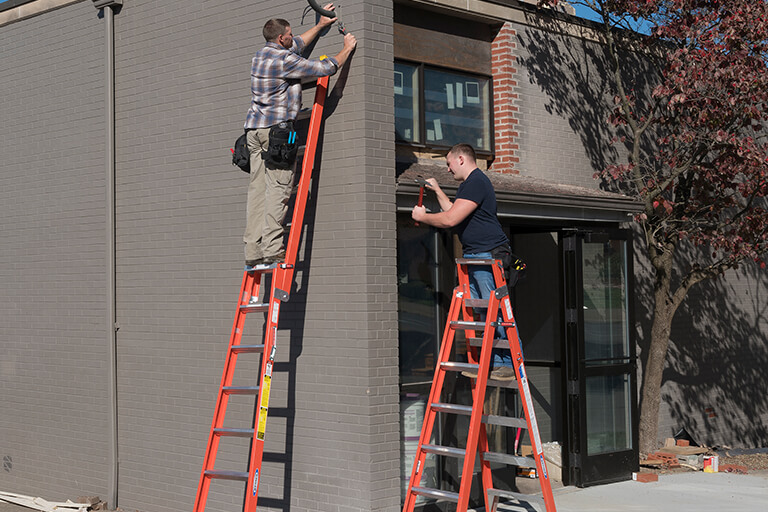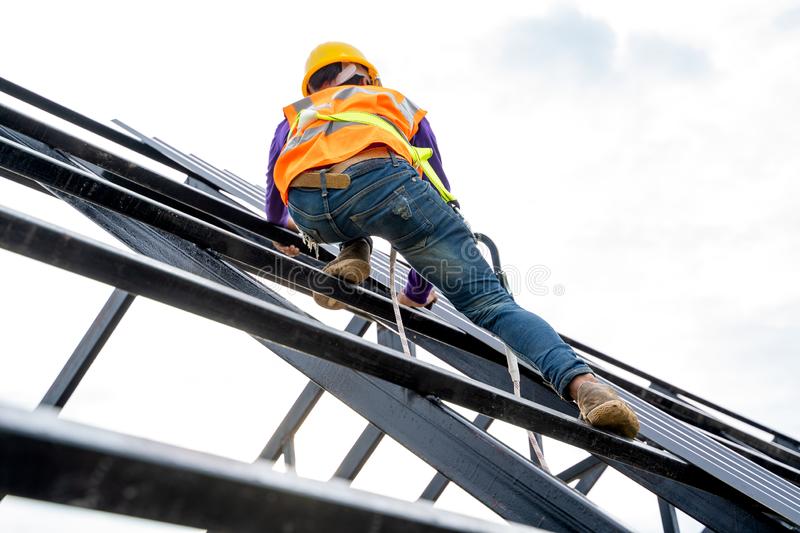
How to work on your roof safely
7th Oct '20 • By Rohit Mankame
Planning to work on your roof to find a leak or fix the tiles? You should be aware of safety information to avoid falling, slipping or injuring yourself when you're doing the roofing work
 Some homeowners would never have to climb up to the roof of their house. But to find the cause of a leak, to make a small fix or to clear tree branches and other debris from the roof, some may find it necessary to climb onto the roof. There is some major safety information to bear in mind if you plan to work on the roof.
Some homeowners would never have to climb up to the roof of their house. But to find the cause of a leak, to make a small fix or to clear tree branches and other debris from the roof, some may find it necessary to climb onto the roof. There is some major safety information to bear in mind if you plan to work on the roof.
Many roofs are too steep for the average human to step safely on, and it is better to leave it to a professional roofer to access your steep-slope roofs. You can easily slip from the loose parts. Roofs come with their own particular dangers – such as falling, slipping or injuring yourself. To avoid any unpleasant situation, here are some of our tips when it comes to roof safety.
What do you need to safely work on roofs?
Get a good extension ladder
First thing you should have, if you want to reach the top of your roof, is an extension ladder. When purchasing one, be sure that it’s resistant, so that you won’t have any surprises when climbing. Its hinges should be strong and resistant.
Stay far away from power lines and do not bring a ladder across doorways. When you step off the ladder at the top, make sure that it is 1 m higher than the gutter or roof. The ladder angle should be 4 in 1, that is, for every 4 m you go up, 1 m from the gutter line comes down. Always face the ladder and hold 3 touch points with it (both feet and a hand) and do not overreach.
Extend your ladder appropriately
A good ladder should reach past the edge of the roof. This will ensure that you will be able to get on and off the roof safely. There are products readily available like Ladder Locks which secures your ladder to the roof. If your ladder is not secured to your roof, we recommend asking a friend or family member to hold the ladder whilst you climb up or down.
When climbing, keep your hips inside the rails of the ladder. Don't lean out or reach to the sides. Always keep both hands on the rungs as you make your way up or down the ladder.
Wear a harness
Having a strong, resistant harness is an important roof safety measure. When safety nets or guardrails are not present, personal fall protection is a must. However, before getting to work, remember to adjust to it. Knowing how to use this safety tool is a must to avoid severe injuries or even death from a fall.
Ask the supplier at the outlet to explain how to put on the harness and have it adjusted to fit properly. You put the harness on by stepping through leg loops, then place it over your shoulders with a D-ring at back. Do up the chest buckle. The lanyard, which connects harness to safety rope, is fixed to D-ring and must be at top, centred between your shoulders.
Always wear a safety hat
One of the simplest safety precautions that anyone can take is also one of the most ignored. There is no doubt that safety hats save lives. Wearing it is one of the first things to do when doing work around the house.
Roof jacks and walk boards
Roof jacks made from thick steel are one of the best tools for climbing a steep roof. Pairs of these brackets are fitted on nails hammered into rafters, and then planks are laid between them.
Anyone who is doing roof work should implement a system of roof jacks or walk boards. By placing wood boards near your working area, you will avoid injuries or even death from falling off the roof. This system is particularly important for high pitched roofs.
It is advisable to walk up a steep roof sideways. That is, instead of stepping straight out in front of you, place your feet, one at a time, sideways as you step up.
Follow a safety plan
Last but not least, follow a safety plan. Note what the possible risks for the task is, so that you can avoid them; also, note what protection you should use for each task. This is the most important aspect to take into consideration when repairing or building a roof. Safety measures should be taken, but you should also know what steps to take. This method saves time, and it might also save lives.
You can also look at the safe work on roofs information sheet that provides advice on how to manage the risks associated with working on roofs. It includes information on working at height, roof access, managing risks with electricity and what to do in each case.
If you’re not entirely familiar with roof work or do not have the required equipment or no how, we always recommend hiring a professional. What’s more, professional roofers can usually do the job quicker and more efficiently.
Click on the button below to get free no obligation quotes from our local trusted professional roofers for your roofing needs from service.com.au.
Get free quotes in minutes.
Get quotes from our qualified and licensed tradies Australia wide.




